#hesketh prichard
Text
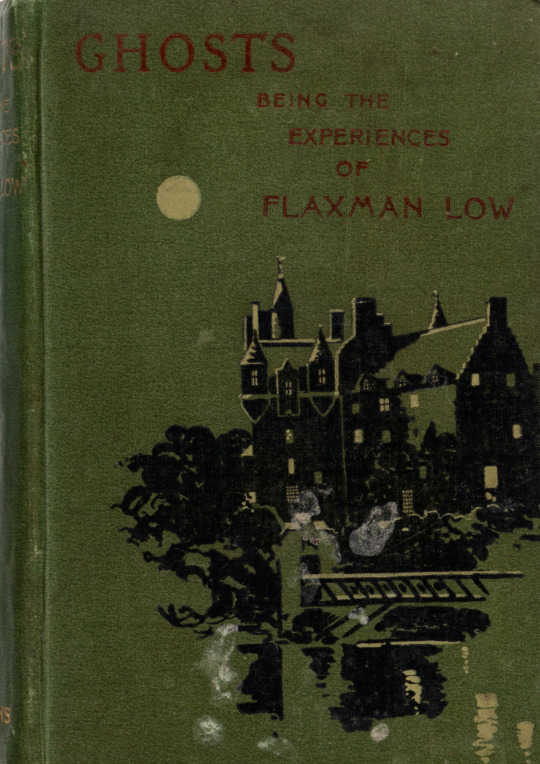
K. and Hesketh Prichard - Ghosts: being the experiences of Flaxman Low (C. Arthur Pearson Limited, 1899). Illustrated by Benjamin Edwin Minns.
#k. prichard#hesketh prichard#benjamin edwin minns#ghosts: being the experiences of flaxman low#horror#paranormal#ghosts#old books#victorian gothic
100 notes
·
View notes
Text
I have just been reading David Blaize and think it lovely — the best school story yet written bar none. Here we have a continual stream of young officers to train as scouts and snipers and there has been a great run on David, as many as three copies of him on one course. Many of the lads who have come have few if any memories of anything but home and school as this is a young man's job. I think you would perhaps like to know the pleasure your book has given to these very fine and gallant lads who come to first army training school from the trenches.
A letter from WWI's Major Hesketh Hesketh-Prichard to E. F. Benson over David Blaize's popularity in the British army.
6 notes
·
View notes
Text

This is my small to-be-read pile this spring:
The Prisoner of Paradise by Rob Samborn
Babes in the Wood by Mark Stay
Ghosts: Being the Experiences of Flaxman Low by K and Hesketh Prichard
The Rules of Magic by Alice Hoffman
What are you reading?
#SpringReading #amreadingthriller #amreadingfantasy #amreadinghorror #readers #TBRpile #alicehoffman
0 notes
Text
im reading about R v Dudley and Stephens (wikipedia hole, you know how it is) and i would like to state on the record that should i ever be shipwrecked, regardless of whether or not i am comatose, any fellow survivors trapped in a lifeboat should consider it fair game to kill me for food.
i’m sure i’ll say as much at the time should such a situation arise but let its being stated here demonstrate my clear mind & forethought on the matter. one could probably still level assisted suicide charges but i feel any jury should keep in mind that i am declaring, legally, that “it’s cool, bro.“
the only exception to this is if i’m trapped on a boat with a jerk but given how much i hate boats and my violent inclinations i would probably have already attacked one in a frenzy & so become fair game by virtue of self defense. if you’re on a lifeboat and i attack somebody you have my permission to kill & eat me but i do request they not be allowed to have any, out of spite. this part isn’t legally binding i just think u should know
#clare does research sometimes#i'm trying to make a good dog pun and like wow have i gotten off task#don't remember how i got here but i was reading about conjoined twins?#and hesketh hesketh-prichard which like. who changes their name to include a hyphenated version of their own name#(says clare clarenecessities)#THAT i got to through zorro though via finding out zorro is spanish for fox bc what the fuck#i think mea culpeo is funny but also pretty dumb and it doesn't suit my purposes even a little#well. back in i go
5 notes
·
View notes
Photo

Ghosts: Being the Experiences of Flaxman Low. Kate O'Brien Ryall Prichard and Vernon Hesketh-Prichard. London: C. Arthur Pearson Limited, 1899. Illustrations by B. E. Minns. First edition.
"Series of hauntings investigated by Flaxman Low, an occult Sherlock Holmes, culminating in a confrontation with his Moriarty, the evil Dr. Kalmarkane." - Robert Knowlton. "Probably the first important adventures of an occult detective, if Le Fanu's Dr. Hesselius is momentarily overlooked ... Derivative from Doyle, but important historically, despite commercial level." - Bleiler, The Guide to Supernatural Fiction.
#Ghosts: Being the Experiences of Flaxman Low#Kate O'Brien Ryall Prichard#Vernon Hesketh-Prichard#B. E. Minns#first edition
69 notes
·
View notes
Photo

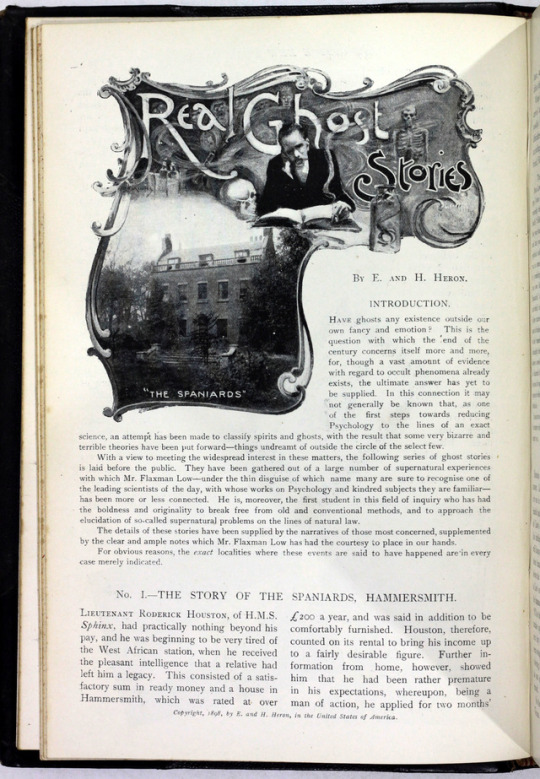
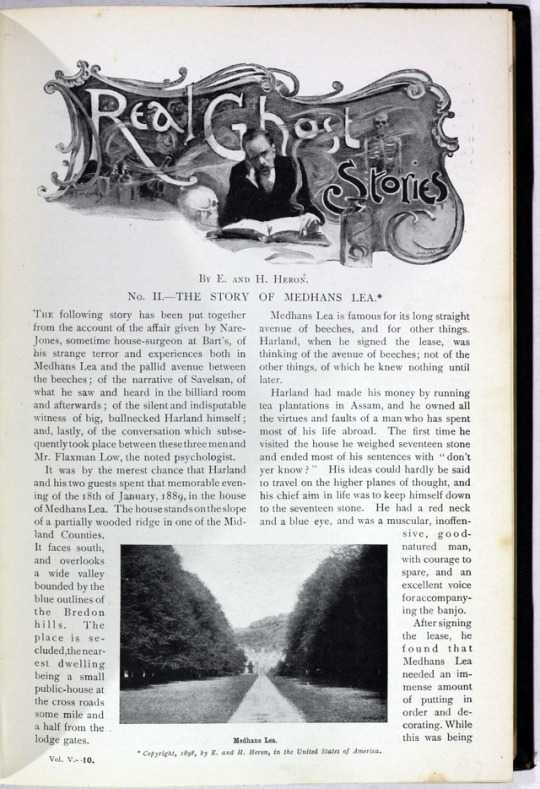

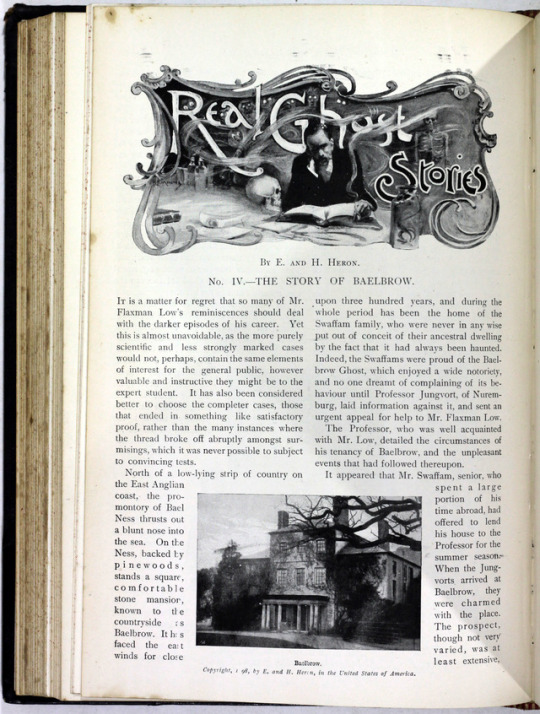

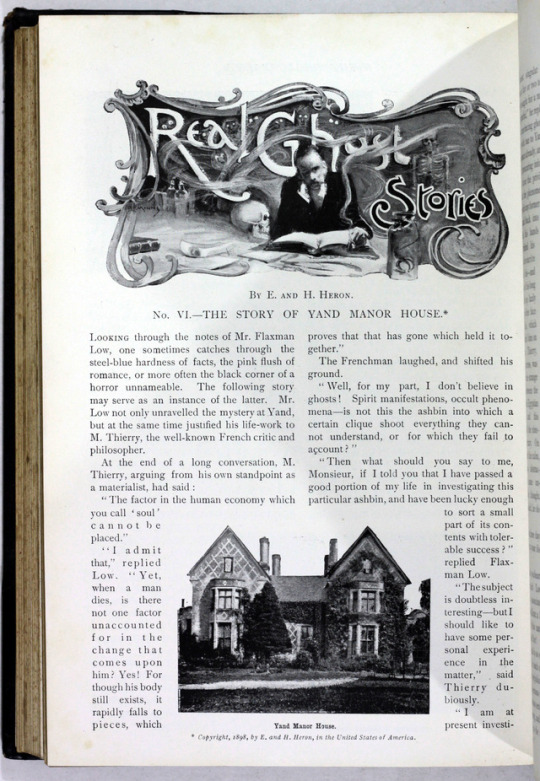
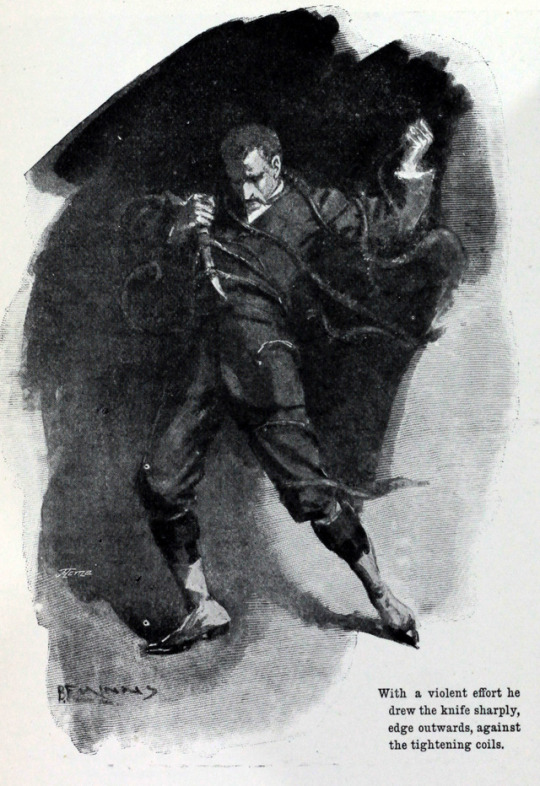


Pearson’s Magazine Jan-June 1898; among many other articles this volume contains the first appearance in print of Flaxman Low; credited as being the first psychic detective. This volume contains the first 6 [of a total of 13] 'Real Ghost Stories' created by British authors Hesketh Hesketh-Prichard and his mother Kate O'Brien Ryall Prichard, published under the pseudonyms "H. Heron" and "E. Heron". Flaxman Low is actually a pseudonym for “one of the leading scientists of the” Victorian era, whose real name is not disclosed in the stories. He was an accomplished athlete in his youth and has turned his interests to a scientific study of the occult
the stories in theis volume are as follows
The Story of the Spaniards, Hammersmith (1898); Low is called in by an old friend to investigate a house haunted by a suffocating, bladder-like presence
The Story of Medhans Lea (1898); Low investigates a house plagued by a child’s crying, and a sinister figure dressed in black with a horrifying laugh
The Story of the Moor Road (1898); Low crosses paths with a sickly, coughing spirit which assaults travelers on the Moor Road
The Story of Baelbrow (1898); When the ephemeral, harmless ghost of Baelbrow takes on a material, deadly form, Low risks his life to find an explanation.
The Story of the Grey House: Low’s curiosity is piqued by the history of the Grey House, where numerous residents have been found mysteriously hanged, even though no rope is ever found
The Story of Yand Manor House (1898); Low brings a friend, French philosopher Thierry, along on a curious case. The Yand House dining-room is possessed by a malevolent spirit which cannot be seen or heard: only felt and tasted
Flaxman Low himself is a psychic detective of a pure Sherlock Holmes-ian style: he investigates and solves psychic mysteries with no tools other than his immense knowledge of supernatural phenomena and his keen powers of observation - "The Improbable Adventures of Sherlock Holmes" (2009) includes a short story by author Barbara Roden, "The Things That Shall Come Upon Them" which teams up Flaxman Low with Sherlock Holmes who together investigate a haunted house mystery
The full collection of stories was published in 1898/99 in Pearson's Magazine and later in one volume in 1899 as The Experiences of Flaxman Low - the magazine however has 75 illustrations many more than were featured in single book which used only 12.
Increasingly uncommon
#old#books#old books#old bookshop#michaelmoonsbookshop#bibliophile#19th century#vintage#victorian#antique books#antique bookshop#Antiquarian bookshop#ghost stories#detective stories#ghosts#real ghost stories#Flaxman Low#Psychic detective#rare books#whitehaven
960 notes
·
View notes
Text
MONSTER FROM THE PAST
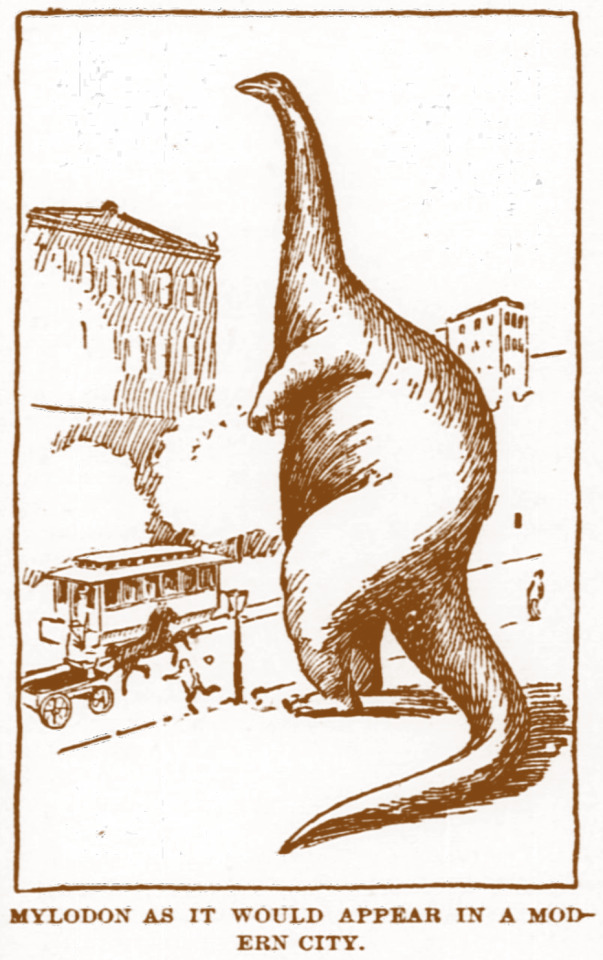
HUNTING BIG GAME (August 11, 1900).
A London Newspaper Hopes to Find Giant Sloths in Patagonia.
The London Daily Express has got up an expedition to Patagonia to find whether the mylodon, or giant sloth, still exists in the mountains there.
The fact that scientists believe these giants of prehistoric times still exist in flesh and blood was brought to light in a lecture by Professor Ray Lancaster in London, who said:
"It Is quite possible, but I don't want to say more than that. I believe the giant ground sloth still exists in some of the mountainous regions of Patagonia."
Professor Lancaster concluded his interesting lecture by showing a colored representation of a mylodon as the best authorities consider him to have appeared or as perhaps he does today appear in the lower portion of the Andes.
These sloths attained an enormous length. The skeleton of one of the same family found recently in Wyoming measured 135 feet.
They had powerful hind legs and a tail of enormous strength, much resembling that of a kangaroo, but of giant proportions. They could stand upright, and it is believed that they subsisted mostly on the tender tops of trees.
Descendants of the sloth are still found in Central and South America, but they are comparatively small. The modern sloths seldom if ever stand upright. They cling to the lower side of branches, and when one enters a tree he does not leave it until it has been denuded of all its foliage. It is called a sloth because of its slow movements.
The Express expedition is fitted out so that if at all possible one of the giants will be taken alive. Hesketh Prichard, who is at present acting as The Express commissioner of the Haiti expedition, is to have charge of this search for a monster.
J. B. Scrivenor, B. A., who won the Burdett-Coutts scholarship at Oxford in 1899, will accompany Prichard as geologist.
They firmly believe they will find a mylodon, but even if they should not the unexplored region to be traversed will add much to the zoological and geological knowledge of southern Patagonia.
From— El Paso daily herald. (El Paso, Tex.), 11 Aug. 1900. Chronicling America: Historic American Newspapers. Lib. of Congress.
* * *
ALSO FOR MORE LIKE THIS SEE … Our Tumblr Page … with new posts forthcoming :-) [ Lumberwoods.com : A Lost & Found of Forgotten Lore ] Don’t forget to Like Us on Facebook ! Go for it, right now! [Click Here]
#cryptid#cryptozoology#cryptids#monsters#mylodon#survivors#legend#fortean#prehistoric#legendary creature#Legendary Creatures#urban legend#myth#folklore#patagonia#monster hunt#monster hunter#fantastic beasts#fabulous creature#monster#creature
2 notes
·
View notes
Photo
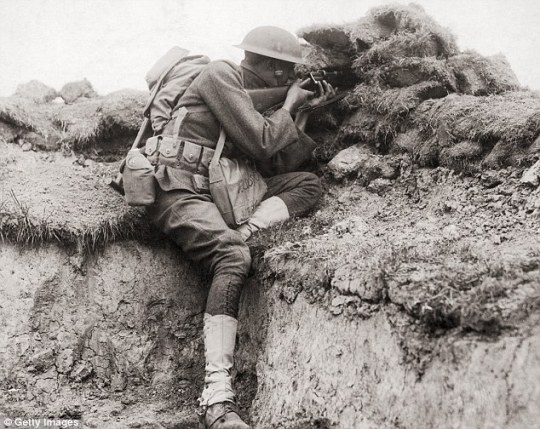
Snipers
“We have been trekking hard all these last days. Heat and dust terrible... We got in a wood and were surrounded by Germans. The Germans are very fond of wood fighting and detail snipers to get up trees. We lost considerably including nine officers.” Letter from Lt. Neville Woodroffe during the Mons Retreat, 1914.
Snipers can trace their lineage to hunters who began using rifled firearms that could fire accurately at longer rangers. In the North American colonies, settlers adapted the rifle to warfare, and riflemen were used as snipers by both sides during the American Revolutionary War, and by the British in the Napoleonic Wars. During the Second Boer War, Boer marksman with accurate Mauser rifles took a heavy toll on regular British forces. In response, the British formed the first professional unit of trained snipers, the Lovat Scouts, using telescopic rifles and wearing camouflage suits. Their commander said of them that they were “half wolf and half jackrabbit.“

A British officer shoots from a camouflaged position.
The trench warfare of the First World War suited the sniper perfectly. At the beginning of the war, sniping was an amateur affair, practiced mostly by officers used to hunting from before the war. Armed with personal hunting rifles, sharpshooters spent their spare time trying to pick off enemy soldiers. Only the Imperial German Army issued out telescopic sites, and soon the trained German snipers developed a fearsome reputation in the Entente armies.
In response, the British and French set about professionalizing their own marksmen. Big-game hunters like Hesketh Hesketh-Prichard worked hard to develop sniper tactics to counter the Germans. All armies set up training schools, and following in the Germans’ wake the British and French began issuing standard-issue scoped rifles. Optics underwent significant development; a major example was the “periscope” rifle that used sloped mirrors to allow soldiers to fire without revealing themselves above the trench parapet.

A British soldier at Gallipoli tries to lure Turkish snipers into firing; his friends don’t seem amused.
As snipers improved in quality, the danger they posed increased. Working in pairs, snipers were expected to memorize the layout of the land in front of them, noticing any subtle change. They wore camouflage and shot from disguised or armored positions to remain safe themselves while they watched for any sudden enemy movement. Even a man who exposed himself for a fraction of a second might become a casualty. The most valuable targets were officers, signalers trying to lay communication lines, and soldiers bringing up rations from field kitchens.
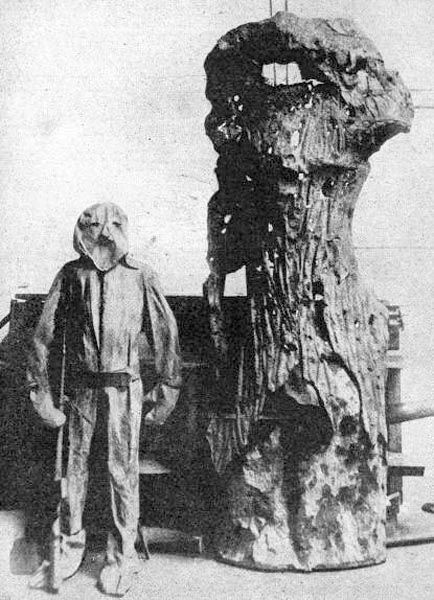
A camouflaged British marksman next to a fake tree he used as a platform.
The sniper war became a daily feature of life on the front line. Soldiers developed methods to cope. Robert Graves remembered being troubled by one particular German sniper, but he found a response: "Later we secured an elephant-gun that could send a bullet through enemy loopholes and if we failed to locate the loop-hole of a persistent sniper, we tried to dislodge him with a volley of rifle-grenades, or even by ringing up the artillery.”
The randomness of death scared troops. It even created one superstition - never light a cigarette three times from the same match. “The sniper sees the first light, he hones in on the second, and when he sees the third he takes the shot.”
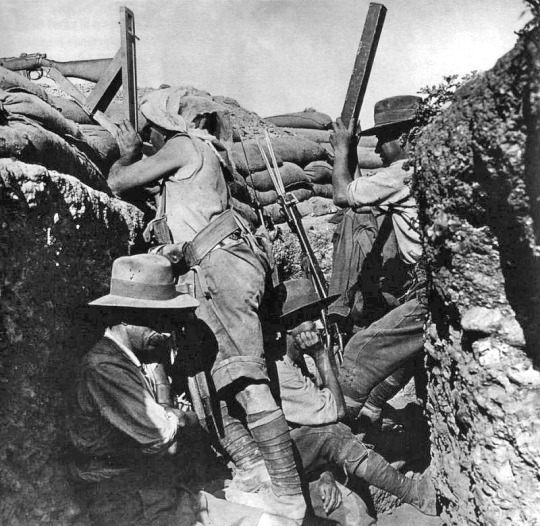
Anzac troops use a periscope rifle on Gallipoli.
Soldiers hated snipers and a captured one could expect no mercy. Nevertheless, sniping had a mental toll of its own. Some treated it like hunting, but others were disturbed by its oddly personal nature. R. A. Chell remembered feeling so during his first try at it:
“After about fifteen minutes quiet watching - with my rifle in a ready position - I saw a capless bald head come up behind the plate. The day was bright and clear and I hadn't the slightest difficulty in taking a most deliberate aim at the very centre of that bright and shiny plate - but somehow I couldn't press the trigger: to shoot such a 'sitter' so deliberately in cold blood required more real courage than I possessed. After a good look round he went down and I argued with myself about my duty. My bald-headed opponent had been given a very sporting chance and if he were fool enough to come up again I must shoot him unflinchingly. I considered it my duty to be absolutely ready for that contingency. After about two minutes he came up again with added boldness and I did my duty. I had been a marksman before the war and so had no doubt about the instantaneousness of that man's death. I felt funny for days and the shooting of another German at 'stand-to' the next morning did nothing to remove those horrid feelings I had.”
394 notes
·
View notes
Photo
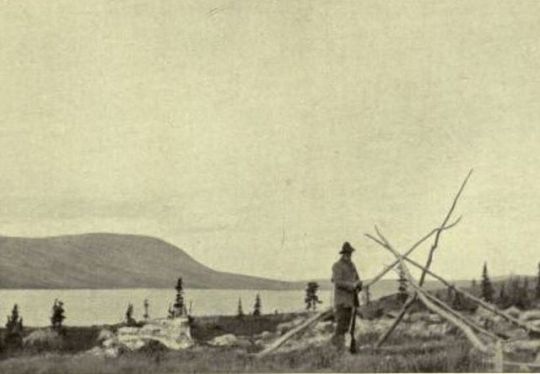
T R A D E // The Canoeist library- Final visit of Through Trackless Labrador published 1911 by Prichard, Hesketh Vernon Hesketh, Gathorne-Hardy. Travel documentaries from the Atlantic to northern Quebec. Camp is Home. Best- 🌲✋🏽🌲 #canoeist #canoeisttrade . . . #wintercamping #wildernessculture #explore #exploremore #explorenorth #travelnorth #outdoorlife #outdoorculture #forgeyourownpath #getoutside #heritage #history #keepitwild #livefolk #liveauthentic #filsonlife #campishome #campvibes #vintagellbean #neverstopexploring #canoe #canoeing #canoetrip
#keepitwild#canoetrip#livefolk#explorenorth#campishome#explore#heritage#history#campvibes#canoeisttrade#vintagellbean#outdoorculture#travelnorth#outdoorlife#forgeyourownpath#wildernessculture#wintercamping#neverstopexploring#filsonlife#canoe#canoeing#exploremore#canoeist#getoutside#liveauthentic
1 note
·
View note
Photo
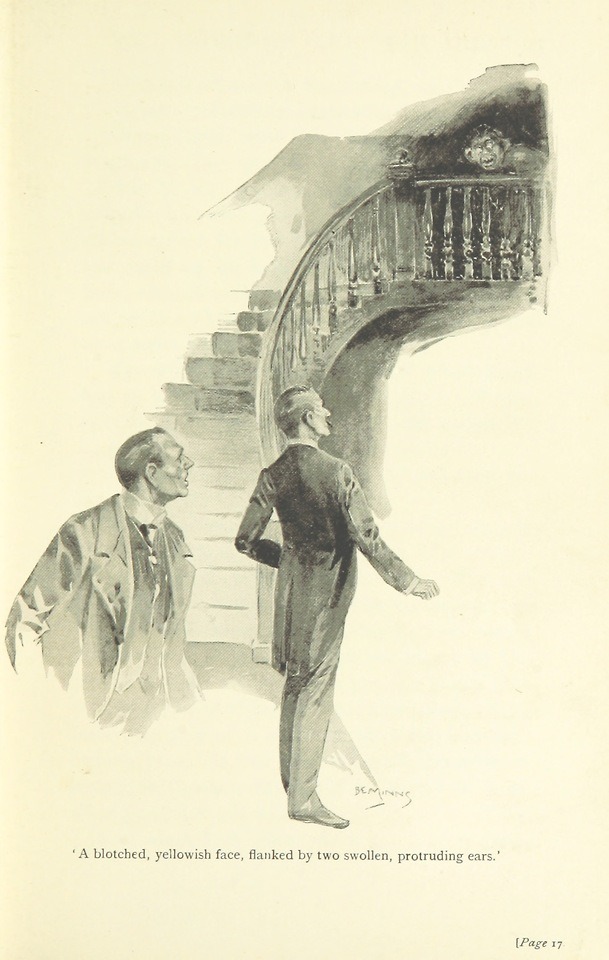
Image from 'Ghosts: being the experiences of Flaxman Low ... With twelve illustrations by B. E. Minns', 002988524
Author: PRICHARD, Kate O'Brien and PRICHARD, afterwards HESKETH-PRICHARD (Hesketh Vernon)
Page: 31
Year: 1899
Place: London
Publisher: C. A. Pearson
View this image on Flickr
View all the images from this book
Following the link above will take you to the British Library's integrated catalogue. You will be able to download a PDF of the book this image is taken from, as well as view the pages up close with the 'itemViewer'. Click on the 'related items' to search for the electronic version of this work.
#bldigital#bl_labs#britishlibrary#1899#similar_to_171198829837_place_of_publishing#similar_to_171198829837_published_date#similar_to_171198829837_bubblyness_x#fullbody_detected_367left_665top_918right_1767bottom
0 notes
Photo

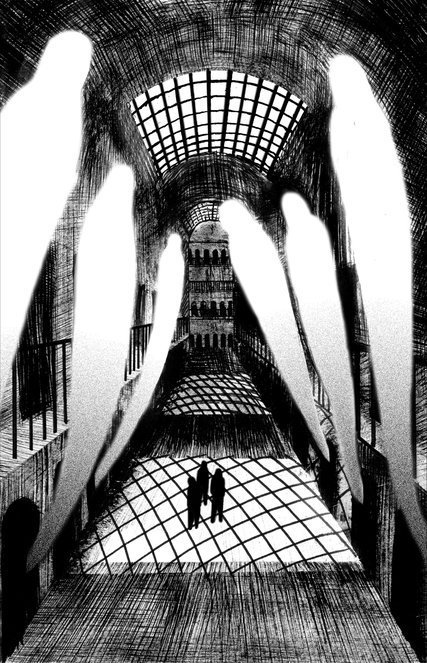
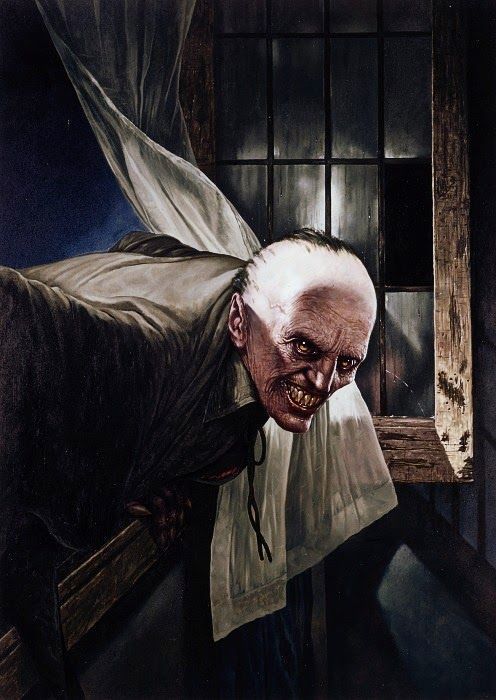
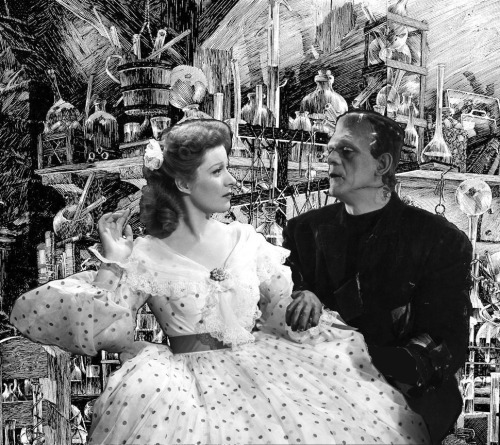
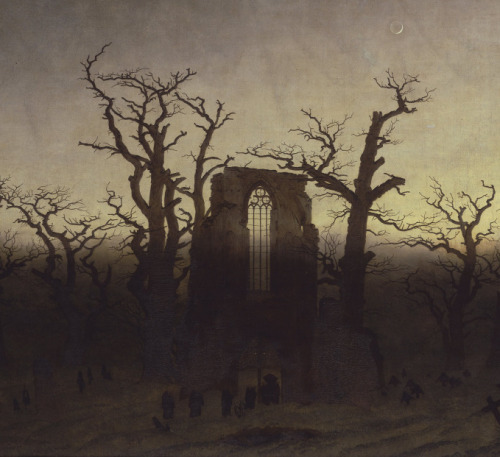
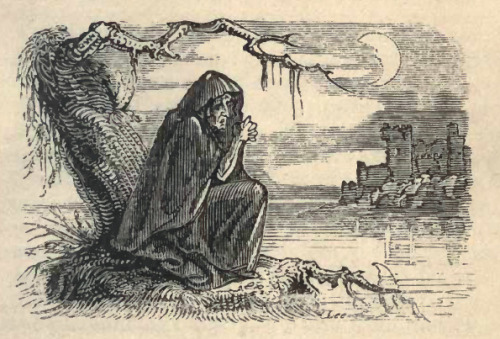
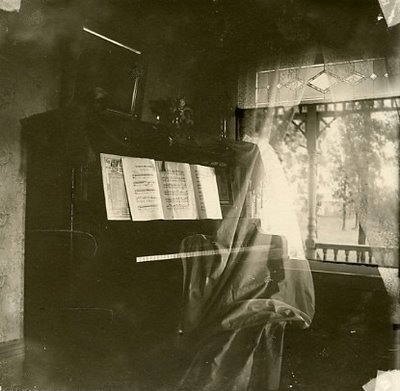
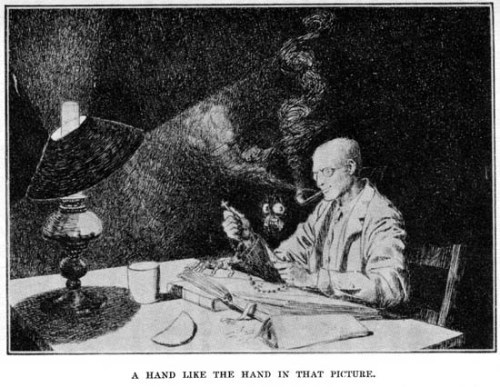
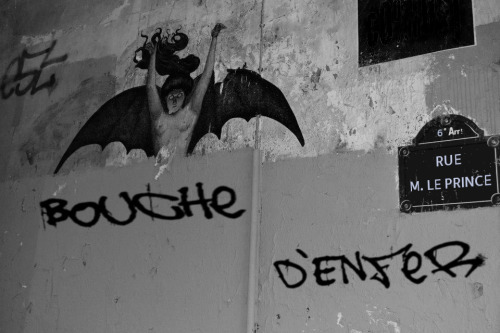
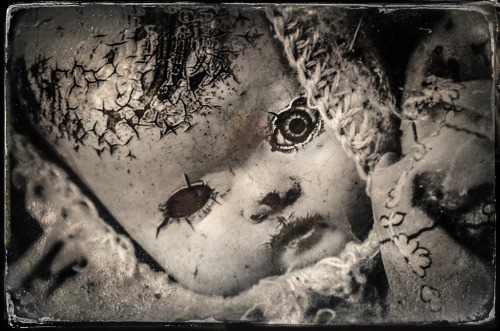
Index of Frightful Friday Posts 101–200
Young Goodman Brown | Nathaniel Hawthorne
The Devil and Daniel Webster | Washington Irving
The Cigarette Case | Oliver Onions
The Readjustment | Mary Austin
No. 5 Branch Line: The Engineer | Amelia Edwards
The Easter Egg | Saki
The Lottery | Shirley Jackson
The Secret of Kralitz | Henry Knutter
Mother of Toads | Clark Ashton Smith
Old Garfield’s Heart | Robert E. Howard
The Outsider | H.P. Lovecraft
The Ghosts | Lord Dunsany
The Man-Eating Tree | Phil Robinson
The Reckoning | Lafcadio Hearn
Wild Swimming | Elodie Harper
Neighbourhood Watch | Greg Egan
The Bus-Conductor | E.F. Benson
The Nightmare Room | Arthur Conan Doyle
The Devil of the Marsh | H.B. Marriott-Watson
Weeds | Stephen King
Djinn and Bitters | Harold Lawlor
A Night of Horror | Dick Donovan (aka James Edward Preston Muddock)
Leiningen Versus the Ants | Carl Stephenson
The Vampire of Croglin Grange | Augustus Hare
Lost Hearts | M.R. James
Round the Fire | Catherine Crowe
The Music of Erich Zann | H.P. Lovecraft
Sir Dominick’s Bargain | J. Sheridan Le Fanu
Pigeons from Hell | Robert E. Howard
The Medici Boots | Pearl Norton Swet
The Toll-House | W.W. Jacobs
Pride & Prometheus | John Kessel
The Shadowy Third | Ellen Glasgow
Was It a Dream? | Guy de Maupassant
The Open Door | Margaret Oliphant
Three Skeleton Key | George G. Toudouze
Man-Size in Marble | Edith Nesbit
Silent Snow, Secret Snow | Conrad Aiken
A Sound of Thunder | Ray Bradbury
The Gateway of the Monster | William Hope Hodgson
Ofodile | Chimamanda Ngozi Adichie
Repossession | Lionel Shriver
Light and Space | Ned Beauman
Stairs | Penelope Lively
Dark Christmas | Jeanette Winterson
How Fear Departed the Long Gallery | E.F. Benson
Thurnley Abbey | Perceval Landon
To Be Read at Dusk | Charles Dickens
The Tractate Middoth | M.R. James
The Truth, The Whole Truth, And Nothing But The Truth | Rhoda Broughton
Lost in a Pyramid, or the Mummy’s Curse | Louisa May Alcott
The Sumach | Ulrich Dabney
The Pavilion | Edith Nesbit
The Flowering of the Strange Orchid | H.G. Wells
At the Dip of the Road | Mary Louisa Molesworth
At Chrighton Abbey | Mary Elizabeth Braddon
Banshees and Warnings | Lady Gregory
At the End of the Corridor | Evangeline Walton
The Tree’s Wife | Mary Elizabeth Counselman
Pickman’s Model | H.P. Lovecraft
The Dead Man | Fritz Leiber
The Canal | Everil Worrell
The Return of the Sorcerer | Clark Ashton Smith
The Child That Went with the Fairies | J. Sheridan Le Fanu
The Piano Next Door | Elia W. Peattie
The Miniature | J.Y. Akerman
The American’s Tale | Arthur Conan Doyle
The Death’s Head | Friedrich Laun
The Spectre-Barber | Johann Karl August Musäus
The Family Portraits | Johann August Apel
The Storm | Sarah Elizabeth Utterson
The Invisible Girl | Mary Shelley
The Botathen Ghost | R.S. Hawker
The Whisperers | Algernon Blackwood
The Curse of Vasartas | Eva Henry
The Lost Door | Dorothy Quick
Canon Alberic’s Scrapbook | M.R. James
The Mysterious Mummy | Sax Rohmer
Dagon | H.P. Lovecraft
Strange Event in the Life of Schalken the Painter | J. Sheridan Le Fanu
The Poor Ghost | Christina Rossetti
The Night Wire | H.F. Arnold
Old Aeson | Arthur Quiller-Couch
The Feather Pillow | Horacio Quiroga
Fingers of a Hand | H.D. Everett
The Tale of Satampra Zeiros | Clark Ashton Smith
The Story of Baelbrow | Kate & Hesketh Prichard
The Jelly-Fish | David H. Keller
The Ebony Frame | Edith Nesbit
The Man of Science | Jerome K. Jerome
The Open Window | Saki
The Hall Bedroom | Mary Wilkins Freeman
No. 252 Rue M. le Prince | Ralph Adams Cram
The Weird Violin | Anonymous
The Ghost’s Summons | Ada Buisson
The Doll’s Ghost | F. Marion Crawford
The Canterville Ghost | Oscar Wilde
The Tapestried Chamber | Sir Walter Scott
The Gorgon’s Head | Edith Bacon
The Empty House | Algernon Blackwood
For the first one hundred stories, please visit:
Index of Frightful Friday Posts 1–100
#Frightful Friday#Ghost Stories#Horror Stories#Horror Literature#Weird Stories#Gothic Fiction#Gothic Literature
131 notes
·
View notes
Text
The JTF2 Heard you, Scott
(Volume 24-07)
By Vincent J. Curtis
For some time now, publisher Scott Taylor has criticized the Canadian government for allowing Canadian soldiers to fight in the front lines in Iraq against ISIS forces. One example of front-line fighting was of a Canadian soldier taking out a vehicle-borne improvised explosive device (VBIED) with a relatively short-range Carl Gustav rocket launcher. The Canadian troops deployed in Iraq are on a training mission, and fighting in the front lines runs contrary to that agreed-upon mandate, he argues.
It appears that Canadian Special Operations Forces in Iraq were paying attention. In June, a Canadian JTF2 sniper made a record-breaking kill shot in Iraq from a twice-confirmed range of 3,540 metres. You can’t get much further behind the front lines than that. Any further back, and you’d bump into the Iraqi Officer’s Mess.
Canadian snipers now hold three of the top five confirmed sniper shots. Dropped into second place, with a range of 2,475 metres, is British sniper Corporal of Horse Craig Harrison of the Blues and Royals, followed by Canadians Cpl Rob Furlong at 2,430, and MCpl Arron Perry at 2,310, both of 3 PPCLI. Fifth place, at 2,300 meters, is held by Sgt Bryan Kremer, 2nd Battalion, 75th Ranger Regiment of the United States Army. The famous Gunnery Sergeant Carlos Hathcock III, U.S. Marine Corps, falls into sixth place at a mere 2,286 metres, albeit made with a scope-mounted M2 Browning machine gun — not ordinarily considered to be a sniping weapon, until he made it into one.
The first Canadian experience of sniping occurred during the Boer War. The Boers were armed with the Mauser Model 1895 that fired the 7mm Mauser spitzer cartridge. This combination completely outclassed and out-ranged the British Magazine Lee Enfield rifle, which fired the Mark II .303 cartridge — hard-hitting but ballistically wanting. The Boers were largely an army of snipers, and it was this experience that gave Sir Charles Ross and Sir Sam Hughes the idea of an army of marksmen equipped with a rifle superior in accuracy and range to the Mauser — the Ross rifle in .280 Ross calibre — and with the Colt M1895 machine gun included for additional firepower.
The British learned some lessons too from the Boer War, and they entered World War I with the Mark VII .303 cartridge and the Short Magazine Lee Enfield rifle. Under Sam Hughes’ tutelage, Canadians stayed with the Ross, adapted for the improved British cartridge. Major H. Hesketh-Prichard, author of Sniping in France, gives his account of “How the British Army Won the Sniping War in the Trenches.”
He writes: “The Canadian Division and, later, the Canadian Corps was full of officers who understood how to deal with the German sniper, and early in the war there were Canadian snipers who were told off to this duty [i.e. counter-sniping], and some of them were extraordinarily successful. Corporal, afterwards, Lieutenant, Christie, of the PPCLI, was one of the individual pioneers of sniping.”
In his book A Rifleman Went to War, W.H. McBride wrote of pre-war Canadian training. “Here, in Canada, the program, which was certainly laid out by an officer who knew his business (I suspect it was Colonel Hughes himself) was one calculated to do just two things: to put the men in physical condition to endure long marches and to thoroughly train them in the use of weapons … In the Battalion were many of the best riflemen in Canada, including Major Elmitt (member of the Canadian Palma team of 1907) … I just mention these things to show how it was that this particular battalion developed into a real aggregation of riflemen … We were using the Ross rifle, a splendid target weapon …”
The top Canadian sniper of the war was Cpl Francis Pegahmagabow, 1st Battalion Canadian Expeditionary Force, with 378 kills with his Ross.
In World War II, Canadian snipers were equipped with a scope-mounted Lee-Enfield No. 4 Mk 1 (T) and organized into scout-sniper platoons. Perhaps the most famous picture of a sniper, then or now, is of Sgt Harold A. Marshall of the Calgary Highlanders, wearing a Denison smock and a Hollywood-handsome look.
In 1972, the Canadian army adopted the C3 Parker Hale, which was based upon a modern target-competition rifle with all the latest improvements for consistent, long-range accuracy. This excellent rifle was in combat service as late as Operation APOLLO, and MCpl Graham Ragsdale of 3 PPCLI recorded over 20 kills with a C3A1 in Afghanistan in March 2002.
The 7.62 NATO calibre C3A1 is being phased out and replaced with the C14 Timberwolf, in .338 Lapua Magnum. The problem with all the classic rifle calibres for sniping nowadays is lack of range. They are limited in effectiveness to the distance at which the bullet falls below the speed of sound, and this typically occurs about 900 metres downrange. Better ballistics dramatically improves range. The Lapua Magnum cartridge is good to 1,500 metres, and the .50 calibre BMG, to over 1,800 metres; and the extraordinary multi-kilometres kills were done with these.
The problem for accurate, long-range sniping becomes accounting for such esoteric factors as atmospheric pressure, and the curvature and speed of rotation of the earth. For this, the sniper’s spotter and his ballistic computer become an absolutely essential part of the team.
The idea of Sam Hughes and Charles Ross of an army of marksmen proved to be impractical, and precise, long-range shooting is now delegated to platoons of snipers with special equipment. Beginning with Hughes, the Canadian Army developed a culture, and now has a reputation for excellence in sniping. Sniping is a skill that is inexpensive to develop. It is a craft that smaller armies like Canada’s, lacking in money and men, can cultivate, and snipers can deliver tactically important results.
With modern tools, Canadian soldiers don’t have to be in no man’s land to be able to dispatch the enemy.
0 notes
Photo
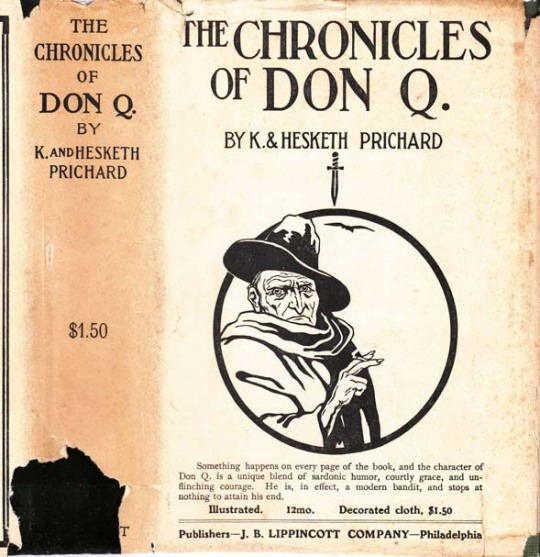
The Chronicles of Don Q. Kate and Hesketh Prichard. Philadelphia: J. B. Lippincott Co., (1904). First edition. Original dust jacket. Stanley L. Wood illustrations.
“The swords crossed, and Lalor had another of his many surprises when he saw how Don Q. handled his weapon. He was as quick as a fencing-master, and his style, though that of a bygone day, left nothing to be desired. Don Basilio, on the other hand, panted as he fought with a heavy, bullying rattle of steel.”
#The Chronicles of Don Q#Kate and Hesketh Prichard#first edition#original dust jacket#Stanley L. Wood
11 notes
·
View notes
Photo

Flaxman Low – Der Fall Teufelsmoor (149)
Im Gruselkabinett gibt es einen neuen Geisterjäger: Flaxman Low, der nach dieser Einstandsfolge das nächste Mal in Folge 155 „Der Geist von Baelbrow“ zu hören ist.
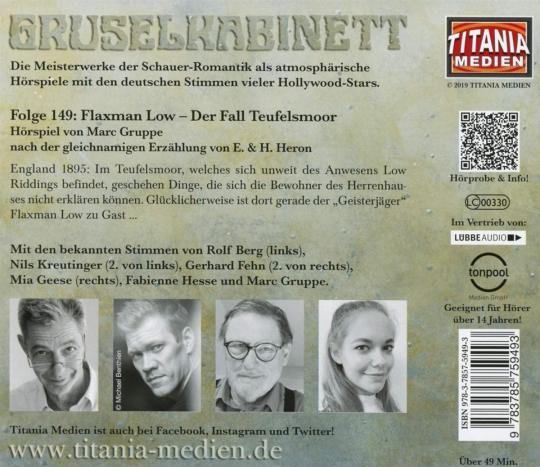
Flaxman Low besucht nach langer Zeit Colonel Winston Daimley und deren inzwischen erwachsene Tochter Olivia. Ebenfalls zugegen ist Lane Chaddam, ein Freund der Familie. Colonel Daimley gelang es nicht, Lows Beruf verständlich zu erklären. Kaum ist dieser eingetroffen, klärt er die anwesenden auf. Sie sind überrascht, dass er mit wissenschaftlichen Methoden Spukerscheinungen nachgeht. Kaum hat er dies erzählt, vertraut ihm Mr. Chaddam an, dass ihm eine Schreckensgestalt im Teufelsmoor begegnete…
Der Fall ist von der Herangehensweise des Geisterjägers wesentlich bodenständiger – zumal er nur als Beobachter auftritt und den Spuk erklärt – als andere Gruselkabinetteinträge. Für meinen Geschmack könnte der Geisterjäger involvierter sein. In Bedrängnis geraten nur andere. Als Einstiegs- und Vorstellungsfolge ist das Hörspiel trotzdem rundum gelungen und ich bin gespannt auf das, was noch kommen mag. Zumal nach den Geschichten der Originalautoren Heron die Serie nicht beendet werden muss, haben doch auch andere Autoren auf den Geisterjäger zurückgegriffen.
Mich wundert allerdings, wieso die Pflegerin von dem Schrecken aus dem Moor nichts mitbekommt oder nichts sagt und wieso scheinbar nur eine Person Opfer des Schreckens wird. Abgesehen davon ist die Geschichte in sich logisch erzählt und hat einen erfrischenden Ansatz, der an den Erfolg anderer Ermittler in der Gruselkabinettreihe anknüpft.
Die Sprecherriege überzeugt auf ganzer Linie. Marc Gruppe ist als Schrecken aus dem Moor zu hören und liefert eine unheimliche Show. Gerhard Fehn spricht hervorragend den alten Colonel Winston und Nils Kreutinger den jungen Lane. Ich freue mich auf ein Wiederhören und ebenfalls, dass Rolf Berg nun garantiert öfter im Gruselkabinett zu hören sein wird: Er spielt gekonnt den ruhigen Flaxman Low. Mit Fabienne Hesse ist eine weitere tolle Stimme dabei. Alle genannten Sprecher ergeben ein sehr harmonisches und gruselkabinett-typisches Gesamttonbild. Mia Geese ist zum ersten Mal bei Titania Medien zu hören und hat eine völlig andere Stimmlage als die anderen Sprecher. Das passt sehr gut zu ihrer charmant-witzigen und vor allem jugendlichen Rolle. Ihre Stimme bietet ein wunderbar charmantes Kontrastprogramm zum restlichen Hörspiel.
Passend zu den Schreckenserlebnissen und den Dank großartiger Sprecher und Geräusche so wunderbar nachvollziehbaren Todeskämpfen, ist das Covermotiv gestaltet. Mich persönlich erinnert die Figur zwar mehr an einen Seemann als einen Landstreicher, aber das kann schlichtweg an mangelnder Erfahrung meinerseits liegen.
Neben dem atmosphärischen Cover wird das Hörspiel von ebenso atmosphärischer Musik begleitet. Die 49 Minuten vergehen sehr schnell und es spricht nichts dagegen, das kurzweilige Hörspiel gleich nochmal zu hören. So mag ich das!
Fazit
Ein gelungener Start in eine weitere Miniserie innerhalb des Gruselkabinett mit einem neuen Ermittler: Flaxman Low.
#Flaxman Low#Gruselkabinett#Titania Medien#Heron#E. & H. Heron#Hesketh Hesketh-Prichard#Kate O'Brien Ryall Prichard
0 notes
Text
Marksmen In History
Marksmen, Sharpshooters and Snipers in History Mark R. Mebes, SFC Genghis Kahn, William Tell, Robin Hood, Francis Marion, George Rogers Clark, Daniel Morgan, Meriwether Lewis, Davy Crockett, Col. Hiram Berdan, Col. Robert E. Rhodes, Jack Hinson, Billy Dixon, James Butler “Wild Bill” Hickock, Lt. George S. Patton Jr., Maj. Hesketh Prichard, Vassili Zaytsev, Klavdiya Kalugina, Carlos Hathcock, Sgt.…
View On WordPress
0 notes